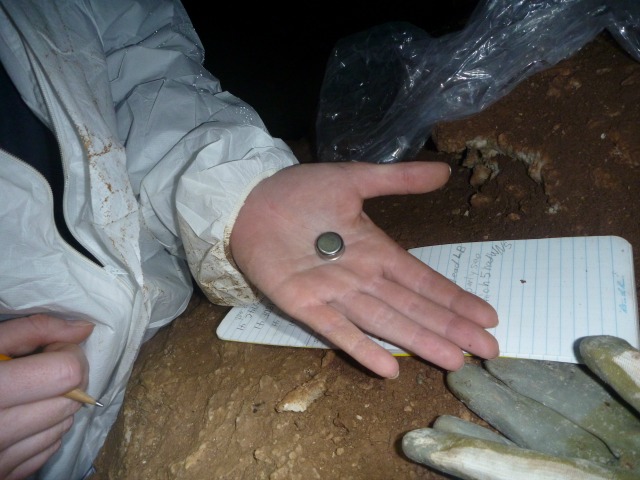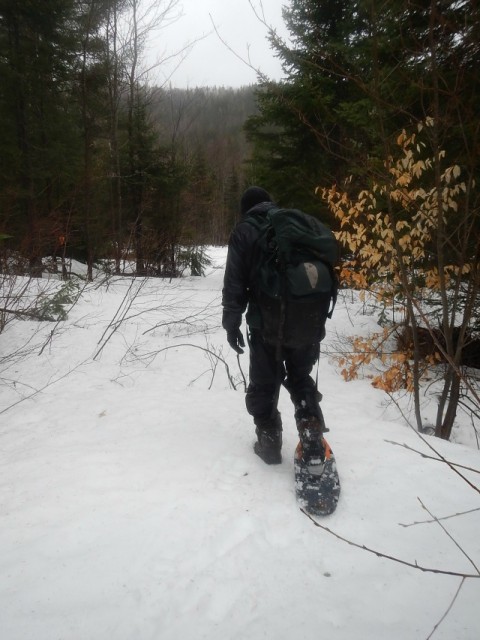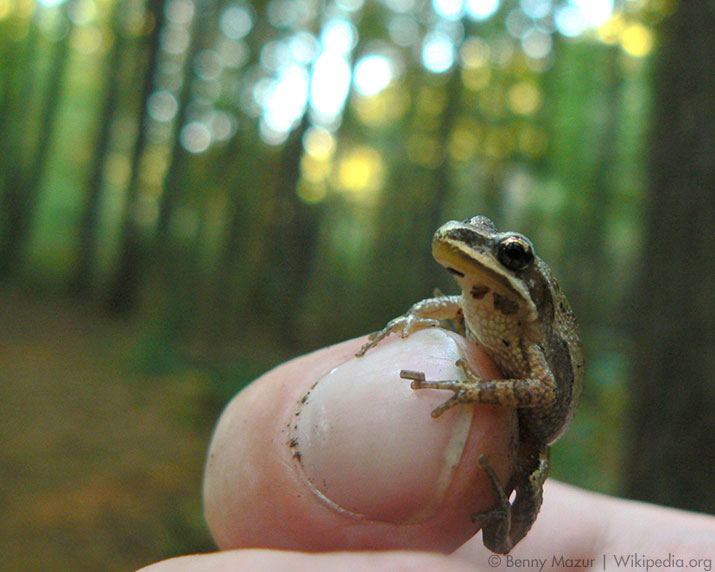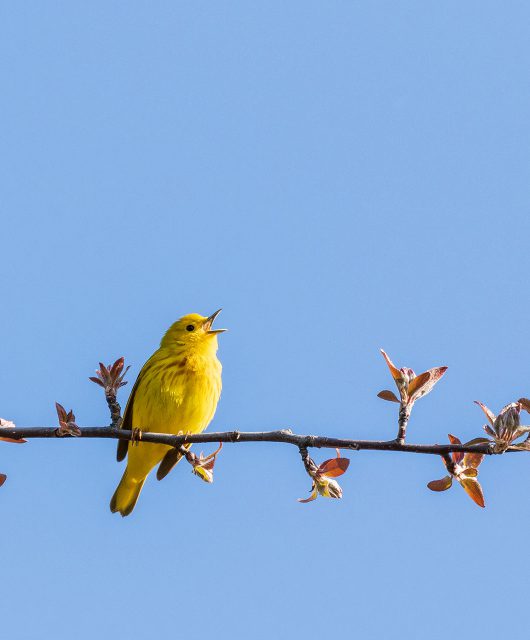We have almost finished our winter bat surveys and found only 12 bats so far. Some of these were visibly infected with white-nose syndrome, but not all, so maybe these bats are capable of surviving. We were hoping the bat population had bottomed out, but this is still a decrease from last year’s survey when we found 24 bats. It is quite depressing doing surveys in empty caves where we used to find hundreds of bats.
The huge snowfall in the Maritimes this past winter has made accessing some of our sites a challenge:
From Left to Right:
(1) It took us about 45 minutes to dig into this cave. Photo Credit: KJ Vanderwolf, (2) It was a challenge climbing back out! Photo Credit: DF McAlpine, (3) Unfortunately one of the snowshoes got knocked into the creek! We tried to find it, to no avail. Photo Credit: KJ Vanderwolf, (4) It is an hour walk to get to one of our sites and this time we did it in the rain. Photo Credit: DF McAlpine.
Even worse, I accidentally dropped 2 ibuttons into the creek which were promptly swept away and lost! We have ibuttons in all our sites and they measure temperature twice a day. We download the data during our survey visits. The temperature deep in caves can radically differ from that outside. Bats cannot hibernate in temperatures below freezing, and the temperature deep in caves in New Brunswick is generally around 5 deg C during the winter. Much warmer than the -20 or -30 deg C outside! Luckily the ibuttons I dropped were those recording temperature outside the cave, which are not as critical to the study.
[one of the ibuttons. Photo Credit: DF McAlpine]
So, sans 2 ibuttons and one snowshoe, we squished our way back through the rain to the car with visions of hot showers in our heads. The creek definitely got the better of us this day! But we’ll be back…
[Photo Credit: KJ Vanderwolf]







5 comments
Thanks for this informative post. I had no idea that the caves used by the hibernating bats could be so warm! It’s also encouraging that some bats are surviving, although it sure sounds like a dangerously low population size.
We’ve noticed (in eastern Ontario) that the insect population in the evenings has soared probably due to the loss of so many of our bats. The Green Frogs seem to be trying to pick up some of the slack but although we’ve seen more of those than in years it’s no where near enough to restore the balance.
Keep posting, we’re out here reading!
Just wondering where you were when these pics were taken but maybe you are not able to give out that info. It just looks like the entrance to a cave in St. Croix area – altho that one isn’t a bat cave. At least I do not think it is. Sad news that numbers are still dropping. Do u think you or others will be importing some bats anytime? Thanks for reading this and hopefully replying. Elizabeth
Hi Elizabeth,
I don’t know of any caves in the St. Croix area. I would be interested in more information. Most of the sites we visit are in the Sussex/Moncton area.
Thanks!
Karen
I’m gob-smacked! It is a dismal day . Will the bat population ever rebound? I certainly hope so. What, if anything can individuals do?
How do you know that you are not spreading the white nose syndrome from cave to cave?